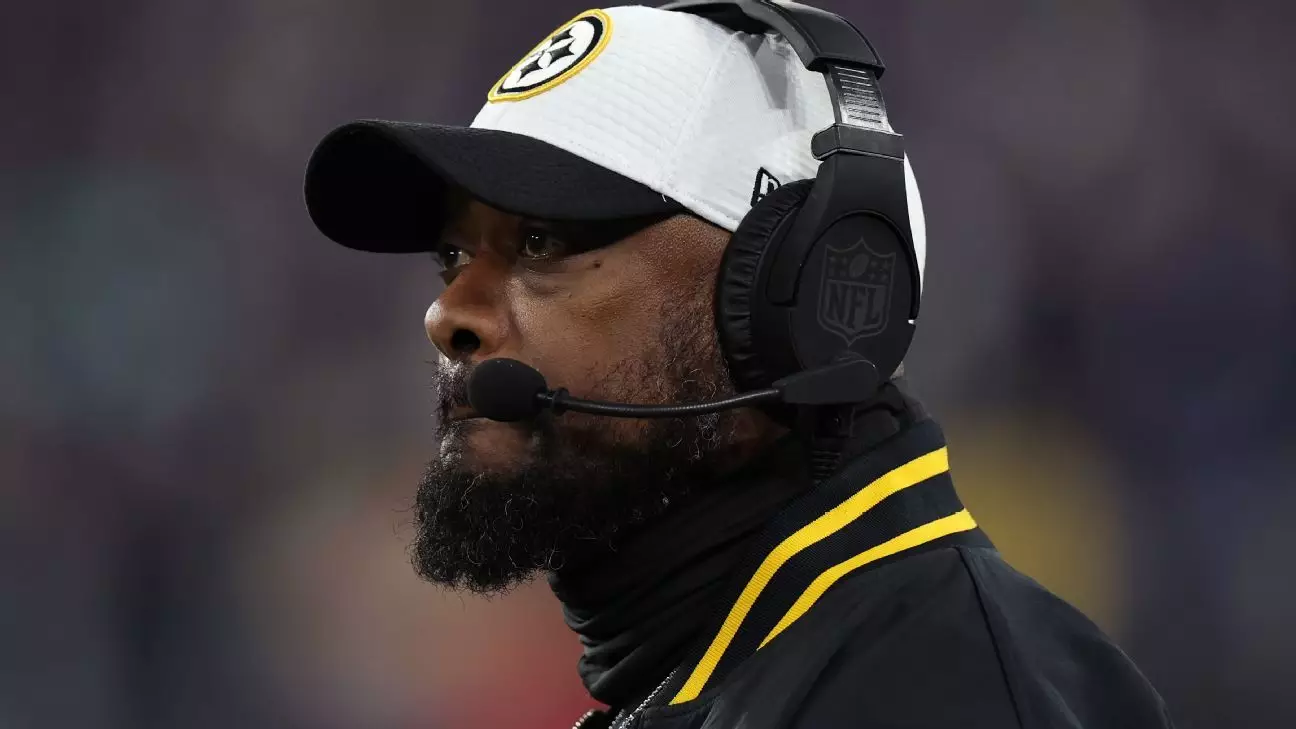In the volatile world of professional football, coaching decisions often sway the fate of franchises. One of the most notable cases in recent times has been the situation surrounding Pittsburgh Steelers’ head coach Mike Tomlin. Reports surfaced that the Chicago Bears reached out to the Steelers inquiring about the potential for a trade involving Tomlin. This inquiry, however, was swiftly met with rejection from Pittsburgh, signaling a commitment to maintaining stability within their organization. This incident raises crucial questions about the implications of coaching stability, team dynamics, and the nature of leadership within the NFL.
Mike Tomlin is not just another figure in the coaching circuit; he embodies a legacy built over 18 seasons in Pittsburgh. His tenure has been marked by perseverance, resilience, and an unwavering commitment to success, with a remarkable record—never finishing with a losing season. When Tomlin initially addressed the speculation regarding his possible availability, his dismissive response, “Save your time,” encapsulated his frustration not just with the rumors but with the very nature of speculation that permeates the league. This strong stance reinforces the idea that some leaders are not easily swayed by external pressures or the whims of the market.
Tomlin’s numerous achievements, including a Super Bowl victory and the remarkable consistency of not suffering through a losing season, lay a robust foundation for his position. With a recent contract extension further cementing his importance to the franchise, it is abundantly clear that the Steelers have no intention of parting ways with a coach of Tomlin’s caliber. The emphasis on retaining such a leader reflects a strategic direction from management that prioritizes continuity over chaotic changes.
On the other hand, the Chicago Bears’ inquiry into Tomlin indicates a desperate search for leadership amidst their own turmoil. Recognizing Tomlin’s proven track record, the Bears’ management is perhaps signaling a desire to move beyond mediocrity. Despite the rejection, the mere act of reaching out showcases the Bears’ willingness to explore all avenues to secure a transformative leader. It exemplifies the urgency with which teams must operate in a competitive environment where coaching can be a pivotal determinant of success.
The nature of these inquiries also highlights the complexities of navigating NFL coaching contracts, including mechanisms like no-trade clauses that act as barriers to such moves. The fact that at least one more team attempted to pursue Tomlin, only to be deterred by contractual restrictions, underscores the desirability of his leadership—and also the potential pitfalls of an uncertain coaching market.
Even without Tomlin as a viable target, the Bears have been proactive in their coaching search, casting a wide net that includes coaches of varied backgrounds and experiences. From experienced figures like Pete Carroll and Mike McCarthy to promising coordinators like Ben Johnson and Brian Flores, the Bears are clearly committed to revitalizing their franchise. This comprehensive approach to hiring highlights an understanding that in the NFL, merely chasing “the big name” can sometimes backfire. Leveraging diverse perspectives is essential in selecting a leader who can foster a new culture of success.
Meanwhile, the Steelers’ strategy emphasizes the value of continuity in leadership. With only three coaches since 1969, it’s evident that Pittsburgh values stability in their operational philosophy. This continuity allows for sustained development of players and maintains a consistent team identity, which can be crucial for building championship-caliber squads.
The juxtaposition of the Bears’ search against the backdrop of Tomlin’s entrenched position in Pittsburgh illustrates the broader dynamics at play in the NFL’s coaching landscape. As organizations grapple with the balance of stability versus innovation, each decision resonates deeply within the culture and performance of the team. While fans’ frustrations are understandable, the long-term vision often dictated by competent coaching must ultimately prevail. Tomlin’s situation serves as a case study—one that highlights the weight of leadership, the importance of continuity, and the necessity for teams to adapt without compromising on their foundational principles. The NFL’s coaching realm continues to evolve, and navigating this landscape requires not just a keen eye for talent but also an appreciation for the lasting impact of stable leadership.

